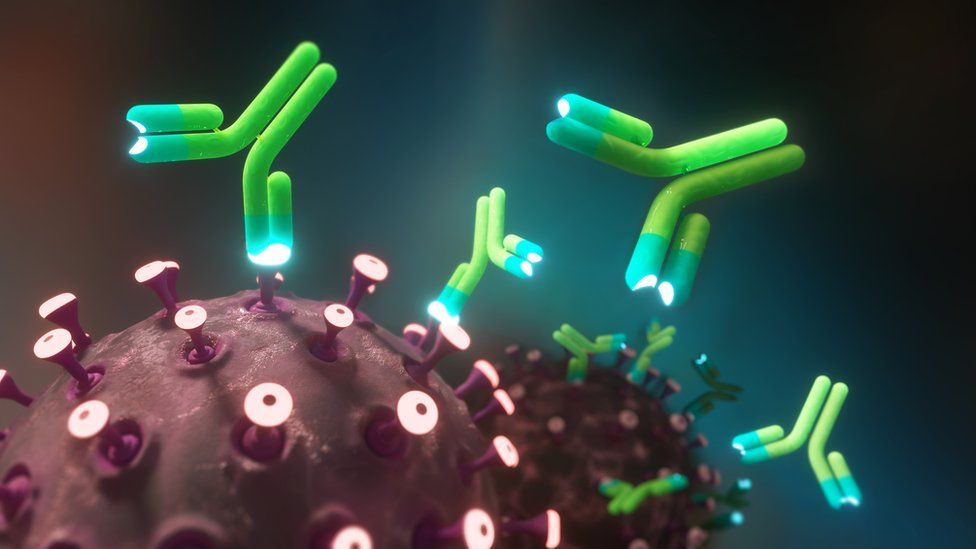ANTIGENS
DEFINITION AND TYPES
The antigens are the substances, which induce specific immune reactions in the body. Antigens are of two types. Those present on the body’s own cells are called the auto- antigens or self antigens. The antigens entering the body from outside are known as foreign or nonself antigens.
NONSELF ANTIGENS :–
Following are the nonself antigens:
1. The receptors on the cell membrane of microbial organisms such as bacteria, viruses and fungi
2. The toxins from microbial organisms
3. The materials from transplanted organs or incompatible blood cells and
4. Allergens or allergic substances like pollen grains .
The nonself antigens are classified into two types depending upon the response developed against them in the body.
1. The antigens, which induce the development of immunity or production of antibodies (immunogenicity)
2. The antigens, which react with specific antibodies (allergic reactivity).
ANTIBODIES
Antibodies or immunoglobulins (Ig) are produced by plasma cells in response to the presence of antigens. The immunoglobulins form 20% of the total plasma proteins. Though produced by B lymphocytes, the antibodies are found in almost all the tissues of the body.
Types of Antibodies
Five types of antibodies are known.
1. IgA (lg alpha)
2. IgD (Ig delta)
3. IgE (Ig epsilon)
4. IgG (Ig gamma) and
5. IgM (Ig mu)
Among these antibodies, IgG forms 75% of the anti- bodies in the body.
Functions of Antibodies :
The functions of the antibodies are:
i. IgA takes part in localized defense mechanism in external secretions like tear.
ii. IgD is involved in recognition of the antigen by B lymphocytes.
iii. IgE is involved in allergic reactions.
iv. IgG is responsible for complement fixation.
v. IgM is also responsible for complement fixation.
Mechanism of Actions of Antibodies :
The antibodies protect the body from the invading organisms in two ways :-
1. By direct actions and
2. Through complement system.
1. Direct Actions of Antibodies :-
The antibodies directly inactivate the invading organism by any one of the following methods:
i. Agglutination:
In this, the foreign bodies like red blood cells or bacteria with antigens on their surfaces are bound together into a clump by the antibodies.
ii. Precipitation:
In this, the soluble antigens like tetanus toxin are converted into insoluble forms and then precipitated.
iii. Neutralization:
During this, the antibodies cover the toxic sites of antigenic products.
iv. Lysis:
It is done by the most potent antibodies. These antibodies rupture the cell membrane of the organisms and then destroy them.
2. Actions of Antibodies through Complement System :-
The indirect actions of antibodies are stronger than the direct actions and play more important role in defense mechanism of the body than the direct actions.
The complement system is the one that enhances or accelerates various activities during the fight against the Invading organisms. It is a system of plasma enzymes, which are identified by numbers from C1 to C9. Including ie three subunits of C1 (C1q, C1r C1s) there are 11 enzymes in total. Normally, these enzymes are in inactive form and are activated in two ways, namely:
a. Classical pathway and
b. Alternate pathway.
a. Classical Pathway:-
In this the C, binds with the antibodies and triggers a series of events in which other enzymes are activated in sequence. These enzymes or the byproducts formed during these events produce the following activities.
i. Opsonization:
Activation of neutrophils and macro- phages to engulf the bacteria, which are bound with a protein in plasma called opsonin
ii. Lysis:
Destruction of bacteria by rupturing the cell membrane
iii. Chemotaxis:
Attraction of leukocytes to the site of antigen antibody reaction
iv. Agglutination:
By causing clumping of foreign bodies like red blood cells or bacteria
v. Neutralization:
Covering the toxic sites of antigenic products
vi. Activation of mast cells and basophils:
Which liberate histamine: Histamine dilates the blood vessels and increases capillary permeability. So, plasma proteins from blood enter the tissues and the antigenic products are inactivated.
b. Alternate Pathway:-
The complementary system can also be activated in another way, which is called alternate pathway. This is due to a protein in circulation called factor I. It binds with polysaccharides present in the cell membrane of the invading organisms. This binding activates C3 and C5, which ultimately attack the antigenic products of invading organism.
Specificity of B Lymphocytes :-
Each B lymphocyte is designed to be activated only by one type of antigen. It is also capable of producing antibodies against that antigen only. This property of B lymphocyte is called specificity. In lymphoid tissues, the lymphocytes, which can produce specific antibody, are together called the clone of lymphocytes .
